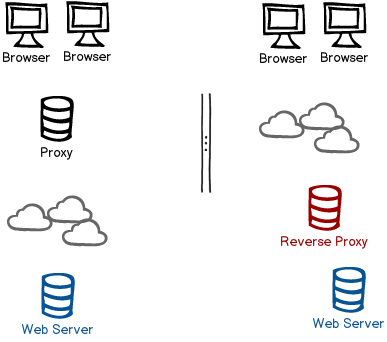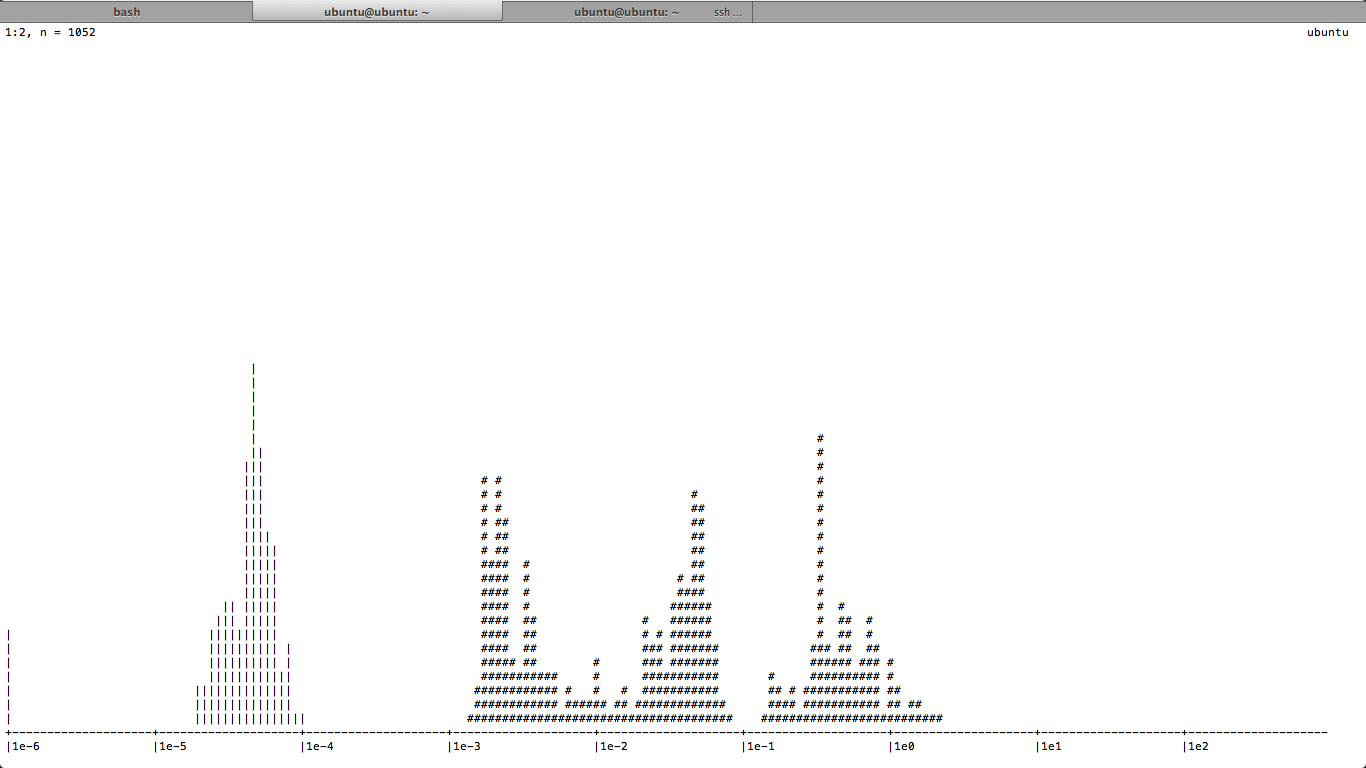Make Your Websites Fly!

Presenter Notes
What is Reverse Proxy?

While a forward proxy is usually situated between the client application (such as a web browser) and the server(s) hosting the desired resources, a reverse proxy is usually situated closer to the server(s) and will only return a configured set of resources.
Presenter Notes
Varnish Cache

Presenter Notes
Varnish Makes Websites Fly
We love Varnish because it's
- built from the ground up as a reverse proxy
- 64bit, and blindingly fast
- focused exclusively on HTTP
- full of programmable behaviours
- open source & commercially supported
Varnish Community https://www.varnish-cache.org/
Presenter Notes
Come Fly With Me
Facebook uses Varnish to serve billions of requests every day to users around the world.
David Recordon, Head of open source initiatives, Facebook.
Presenter Notes
"Facebook uses Varnish to serve billions of requests every day to users around the world. We like its simple architecture, which is designed for modern operating systems and find that it does not consume much CPU while handling heavy loads. Varnish is our favored HTTP cache and we use it heavily; whenever you load photos and profile pictures of your friends on Facebook, there's a very good chance that Varnish is involved."
David Recordon, Head of open source initiatives, Facebook.
Varnish Running On
Google top 1000 list:
16 www.twitter.com (search.twitter.com)
49 www.weather.com (www.weather.com)
53 www.answers.com (www.answers.com)
80 www.globo.com (www.globo.com)
116 www.nytimes.com (or so they tell themselves)
160 www.slideshare.net (www.slideshare.net)
186 www.livejournal.com (www.livejournal.com)
etc
Global Alexa toolbar users:
(Note that facebook (#2) is using varnish, but this is not automatically discovered
9 twitter.com (search.twitter.com)
76 livejournal.com
95 weather.com
111 globo.com
112 stumbleupon.com
144 answers.com
203 wikia.com
220 squidoo.com
etc
Presenter Notes
Google top 1000 list:
Place 16 Varnish running on www.twitter.com (search.twitter.com)
Place 49 Varnish running on www.weather.com (www.weather.com)
Place 53 Varnish running on www.answers.com (www.answers.com)
Place 80 Varnish running on www.globo.com (www.globo.com)
Place 116 Varnish running on www.nytimes.com (or so they tell themselves)
Place 160 Varnish running on www.slideshare.net (www.slideshare.net)
Place 186 Varnish running on www.livejournal.com (www.livejournal.com)
Place 208 Varnish running on www.mercadolivre.com.br (www.mercadolivre.com.br)
Place 215 Varnish running on www.y8.com (www.y8.com)
Place 313 Varnish running on www.robtex.com (www.robtex.com)
Place 368 Varnish running on www.manta.com (www.manta.com)
Place 370 Varnish running on www.squidoo.com (www.squidoo.com)
Place 403 Varnish running on www.taleo.net (www.taleo.net)
Place 488 Varnish running on www.gazeta.pl (www.gazeta.pl)
Place 564 Varnish running on www.wetter.com (www.wetter.com)
Place 579 Varnish running on www.spiegel.de (www.spiegel.de)
Place 596 Varnish running on www.merriam-webster.com (www.merriam-webster.com)
Place 603 Varnish running on www.wat.tv (www.wat.tv)
Place 614 Varnish running on www.rutube.ru (www.rutube.ru)
Place 619 Varnish running on www.mercadolibre.com.mx (www.mercadolibre.com.mx)
Place 652 Varnish running on www.zappos.com (www.zappos.com)
Place 693 Varnish running on www.xpg.com.br (www.xpg.com.br)
Place 700 Varnish running on www.espncricinfo.com (www.espncricinfo.com)
Place 722 Varnish running on www.stumbleupon.com (www.stumbleupon.com)
Place 739 Varnish running on www.wwe.com (www.wwe.com)
Place 766 Varnish running on www.kapook.com (www.kapook.com)
Place 795 Varnish running on www.mercadolibre.com.ar (www.mercadolibre.com.ar)
Place 870 Varnish running on www.xywy.com (www.xywy.com)
Place 885 Varnish running on www.break.com (www.break.com)
Place 969 Varnish running on www.mobifiesta.com (www.mobifiesta.com)
Place 987 Varnish running on www.mercadolibre.com (www.mercadolibre.com)
Place 991 Varnish running on www.popcap.com (www.popcap.com)
Global Alexa toolbar users:
(Note that facebook (#2) is using varnish, but this is not automatically discovered
Place 9 Varnish running on twitter.com (search.twitter.com)
Place 76 Varnish running on livejournal.com
Place 95 Varnish running on weather.com
Place 111 Varnish running on globo.com
Place 112 Varnish running on stumbleupon.com
Place 144 Varnish running on answers.com
Place 203 Varnish running on wikia.com
Place 220 Varnish running on squidoo.com
Place 241 Varnish running on espncricinfo.com
Place 251 Varnish running on slideshare.net
Place 373 Varnish running on soundcloud.com
Place 389 Varnish running on drupal.org
Place 392 Varnish running on mercadolivre.com.br
Place 403 Varnish running on businessinsider.com
Place 435 Varnish running on forbes.com
Place 441 Varnish running on gazeta.pl
Place 479 Varnish running on posterous.com
Getting Started with Varnish
Download & Install
Use your standard package manager (HomeBrew, AppGet, etc). You'll need CYGWIN for Windows (sucks to be you :(
Point Varnish at your web site
# Simple .VCL file
backend default {
.host = "varnish.local";
.port = "80";
}
The default varnish configuration is automatically appended to yours.
Default varnish installation serves cached content from port 6081 proxied from 127.0.0.1:80.
Fire up the service
varnishd -f /usr/local/etc/varnish/default.vcl -s malloc,1G -a 0.0.0.0:8080
-T telnet listen address/port, -s storage, -a varnish address/port
Presenter Notes
Simple CFML Page
<CFHEADER NAME="Cache-Control" VALUE="s-maxage=600">
<cfoutput>
<html>
<body>
<h1>Hello cruel world!</h1>
<strong>Generated by server:</strong>
#dateformat(now(),'ddd, mmm d yyyy')# #timeformat(now(),'HH:mm:ss')#<br>
<strong>Loaded by browser:</strong>
<script type="text/javascript">document.write(new Date());</script>
</body>
</html>
</cfoutput>
Shows the server time (affected by the cache) and the client time on the browser.
- CFHEADER to send caching instructions; must use s-maxage (seconds)
- No Cookies! Sessions should be disabled; by default varnish will invalidate caches if cookies are present
Don't worry you can have your cookies back later!
Presenter Notes
The Nature of Cookies
COOKIES!!! UMM-NUM-NUM-NUM-NUM!!!
Cookie Monster, CEO, No More Cookies Inc.

Presenter Notes
Varnish VCL

Presenter Notes
How Varnish Works
8 subroutines control how Varnish behaves:
vcl_recv() Called after a request is received from the browser, but before it is processed.
vcl_pipe() Called when a request must be forwarded directly to the backend with minimal handling by Varnish (think HTTP CONNECT)
vcl_hash() Called to determine the hash key used to look up a request in the cache.
vcl_hit() Called after a cache lookup when the object requested has been found in the cache.
vcl_miss() Called after a cache lookup when the object requested was not found in the cache.
vcl_pass() Called when the request is to be passed to the backend without looking it up in the cache.
vcl_fetch() Called when the request has been sent to the backend and a response has been received from the backend.
vcl_deliver() Called before a response object (from the cache or the web server) is sent to the requesting client.
But really it boils down to just vcl_recv() and vcl_fetch().
Presenter Notes
"The principal configuration mechanism is VCL (Varnish Configuration Language), a domain-specific language (DSL) used to write hooks which are called at critical points in the handling of each request. Most policy decisions are left to VCL code, making Varnish far more configurable and adaptable than most other HTTP accelerators. When a VCL script is loaded, it is translated to C, compiled to a shared object by the system compiler, and linked directly into the accelerator." Wikipedia: Varnish Cache
VCL_RECV
Processing Client Request
sub vcl_recv {
# Remove user agent
if (req.http.User-Agent) {
set req.http.User-Agent = "";
}
# remove any cookies from client request
unset req.http.cookie;
# look up the cache
return(lookup);
}
Modify Inbound Request from a Browser
- tidy up the request; simplify the headers etc
- get rid of cookies; but not always!
- normalise the User-Agent; otherwise a cache per agent
- look up the cache or; let them through
Presenter Notes
VCL_FETCH
Grabbing the Content Off Your Website
sub vcl_fetch {
# cache period (ttl: time to live)
set beresp.ttl = 45s;
# cache grace period; serve dirty
set beresp.grace = 15s;
}
How to Fetch Content
- finding the backend
- manage the cache timeout
- getting dirty ;)
- handling slow or unresponsive servers
Presenter Notes
Varnish Configuration
vcl_recv & vcl_fetch
# simple.vcl
backend default {
.host = "varnish.local";
.port = "80";
}
sub vcl_recv {
# Remove user agent
if (req.http.User-Agent) {
set req.http.User-Agent = "";
}
# remove any cookies from client request
unset req.http.cookie;
# look up the cache
return(lookup);
}
sub vcl_fetch {
# cache period (ttl: time to live)
set beresp.ttl = 45s;
# cache grace period; serve dirty
set beresp.grace = 15s;
}
Presenter Notes
Caching Strategies

Presenter Notes
Caching Static Assets
Dealing with non-programmable things
sub vcl_recv {
if (req.url ~ "\.(jpg|jpeg|gif|png|ico|css|zip|pdf|txt|tar|wav|bmp|rtf|js|flv|swf|html|htm)$") {
unset req.http.Accept-Encoding;
// Remove user agent
if (req.http.User-Agent) {
set req.http.User-Agent = "";
}
unset req.http.Cookie;
return(lookup);
}
}
~ is a regex operator for strings, set and unset update and remove a property, req.http properties are request headers, return(lookup) returns control to varnish, requesting a cache lookup if possible.
Apache Config: ./virtuals/mysite.conf
<VirtualHost *:80>
# Set up caching on media files for 1 year (forever?)
<FilesMatch "\.(jpg|jpeg|gif|png|ico|css|zip|pdf|txt|tar|wav|bmp|rtf|js|flv|swf|html|htm)$">
ExpiresDefault A29030400
Header append Cache-Control "public"
</FilesMatch>
</VirtualHost>
Presenter Notes
This configuration leaves control of cache timeouts with Apache, but you can force a cache timeout in varnish with a line like "set beresp.ttl = 48h;"
Flush Varnish Cache
# IPs/domains that can access the purge url
acl purge {
"localhost";
"203.26.11.39";
}
sub vcl_recv {
# Purge everything url - this isn't the squid way, but works
if (req.url ~ "^/varnishpurge") {
if (!client.ip ~ purge) {
error 405 "Not allowed.";
}
if (req.url == "/varnishpurge") {
ban("req.http.host == " + req.http.host + " && req.url ~ ^/");
error 841 "Purged site.";
}
else {
ban("req.http.host == " + req.http.host + " && req.url
\ ~ ^" + regsub( req.url, "^/varnishpurge(.*)$", "\1" ) + "$" );
error 842 "Purged page.";
}
}
}
Use an ACL to restrict access to the sensitive functionality like flushing. For ACLs, the ~ operator is an 'in' check.
Presenter Notes
Flush Cache URLs
For example, flushing the entire site
http://www.fullasagoog.com/varnishpurge
For example, flushing a specific URL
http://www.fullasagoog.com/varnishpurge/blog/daemonite
Can be used as a hook to manage the cache from your upstream server. Allows administrators to flush problem pages on demand easily.
Presenter Notes
ban is for varnish 3 what purge was for 2. Bans are stored in memory, and every page request is checked against every ban - there are performance implications.
CTRL F5 to Force Cache Flush
acl CTRLF5 {
"192.168.100.100";
}
sub vcl_hit {
if (client.ip ~ CTRLF5) {
if (req.http.pragma ~ "no-cache" || req.http.Cache-Control ~ "no-cache")
{
set obj.ttl = 0s;
return(pass);
}
else { return(deliver); }
}
else { return(deliver); }
}
Allow administrators to easily flush the cache from their browser
Presenter Notes
Invalidate cache from client side
# IPs/domains that bypass cache
acl bypass {
"1.2.3.4";
}
sub vcl_recv {
if (client.ip ~ bypass) {
return(pass);
}
}
return(pass) passes the request through to the backend, bypassing the cache.
Useful if you want content contributors to see "live" content all the time.
Presenter Notes
Bypass Cache for a Cookie
sub vcl_recv {
if (req.http.Cookie ~ "LOGGED-IN=1") {
return(pass)
}
}
Bypasses cache if there is a LOGGED-IN cookie with value 1.
Caches everything for anonymous users but gives a pass to authenticated users.
Presenter Notes
Punch through Cache with Header
sub vcl_recv {
if (req.http.X-Requested-With == "XMLHttpRequest") {
return(pass)
}
}
ajax requests bypass cache. Keep everything static except personlised regions that are ajaxed into place.
Make sure you Javascript implementation for AJAX actually sets XMLHttpRequest :)
Presenter Notes
Normalising Headers
Varnish can include the user-agent and accept-encoding headers in cache hash, so normalising them is a good idea:
sub vcl_recv {
if (req.http.Accept-Encoding) {
if (req.http.Accept-Encoding ~ "gzip") {
# if the browser supports it, we'll use gzip
set req.http.Accept-Encoding = "gzip";
} elsif (req.http.Accept-Encoding ~ "deflate") {
# next, try deflate if it is supported
set req.http.Accept-Encoding = "deflate";
} else {
# unknown algorithm. Probably junk, remove it
unset req.http.Accept-Encoding;
}
}
# Remove user agent
if (req.http.User-Agent) {
set req.http.User-Agent = "";
}
}
Presenter Notes
Dishing Up Mobile
If your website serves different HTML to mobile users, you might use code like this:
if (req.http.User-Agent ~ "iP(hone|od)" || req.http.User-Agent ~ "Android" ||
\ req.http.User-Agent ~ "Symbian" || req.http.User-Agent ~ "^BlackBerry" ||
\ req.http.User-Agent ~ "^SonyEricsson" || req.http.User-Agent ~ "^Nokia" ||
\ req.http.User-Agent ~ "^SAMSUNG" || req.http.User-Agent ~ "^LG" ||
\ req.http.User-Agent ~ " webOS") {
set req.http.User-Agent = "mobile";
}
else {
set req.http.User-Agent = "desktop";
}
Presenter Notes
Custom Cache Hash
For example, caching by user role
sub vcl_hash {
# these 2 entries are the default ones used for vcl. Below we add our own.
set req.hash += req.http.host;
set req.hash += req.url;
set req.http.X-Varnish-Hashed-By = req.http.host req.url;
if (req.http.Cookie ~ "ROLES") {
set req.hash += regsub( req.http.Cookie, "^.*?ROLES=([^;]*);*.*$", "\1" );
set req.http.X-Varnish-Hashed-By = req.http.X-Varnish-Hashed-By regsub( req.http.Cookie, "^.*?ROLES=([^;]*);*.*$", "\1" );
}
return(hash);
}
Adds a cookie ROLES to the cache key. req.http.X-Varnish-Hashed-By adds a helpful header for debugging.
Presenter Notes
Pass Original IP
Pass along original IP address as a custom header
sub vcl_recv {
// Pass along the IP for uncached pages
if (req.http.x-forwarded-for) {
set req.http.X-Forwarded-For = req.http.X-Forwarded-For ", " client.ip;
} else {
set req.http.X-Forwarded-For = client.ip;
}
}
Great when you are doing something like Geo-Blocking on the server.
Presenter Notes
Varnish in the Wild

Presenter Notes
AdNews: www.adnews.com.au
// vcl_fetch()
// Let any non "GET" / "HEAD" right through
if (req.request != "GET" && req.request != "HEAD"){
set beresp.http.X-Cacheable = "NO:Not GET or HEAD";
return(pass);
}
// strip cookies for everything except specific pages
elsif ( req.url ~ "profile" || req.url ~ "Login" || req.url ~ "login" || req.url ~ "logout" ) {
set beresp.http.X-Cacheable = "NO:Login or logout page";
return(pass);
}
else {
unset beresp.http.set-cookie;
}
Dealing with comment forms, secure content & newsletter driven rushes on the site
- pass form posts (ie not GET) and AJAX traffic (ie not HEAD)
- pass member session pods for login/logout
- cache everything else
Presenter Notes
Bomb Proof: fullasagoog.com
sub vcl_recv {
set req.grace = 300s;
}
sub vcl_fetch {
if (beresp.status == 500) {
set beresp.saintmode = 20s;
if (req.request != "POST") {
return(restart);
} else {
error 500 "Failed";
}
set beresp.ttl = 5s;
}
set beresp.grace = 300s;
}
req.gracedefines how old a cache can be if there is a backend problemberesp.saintmodeflags the current page on the current back end as "bad"return(restart)to retry the request; if there is no "good" backend for the page, the grace will kick inPOSTinformation can't really be restartedberesp.graceis effectively the maximum grace the request can haveberesp.ttlis the cache timeout - setting it overrides the value in the Cache-Control header
Presenter Notes
Misbehaving Servers
Grace mode
When several clients are requesting the same page Varnish will send one request to the backend and place the others on hold while fetching one copy from the back end. In some products this is called request coalescing and Varnish does this automatically.
Saint mode
Sometimes servers get flaky. They start throwing out random errors. You can instruct Varnish to try to handle this in a more-than-graceful way - enter Saint mode. Saint mode enables you to discard a certain page from one backend server and either try another server or serve stale content from cache.
God mode
IDDQD
Presenter Notes
Tuning Varnish

Presenter Notes
Varnish Tools
#show a histogram of hits (|) and misses (#) by the request time
varnishhist
#show the misses by most frequent
varnishtop -b -i txurl
#show general stats (e.g. proportion of hits to misses over time)
varnishstat
#live varnish logs (this is VERY verbose)
varnishlog
#varnish logs, grouped by request, for the daemon office IP
varnishlog -c -o SessionOpen 203.26.11.39
#live varnish logs in apache/NCSA "combined" log format
varnishncsa
Presenter Notes
varnishhist

Presenter Notes
varnishtop -b -i txurl
8.89 TxURL /registered-user/displayTypeLoginPod/ajaxmode/1
7.99 TxURL /post/rss
5.62 TxURL /favicon.ico
4.95 TxURL /xml/ColdFusionMX.xml
4.17 TxURL /googblogpost/rss?format=xml
3.94 TxURL /googblogpost/rss
3.74 TxURL /xml/fullasagoog50.xml
3.71 TxURL /
3.57 TxURL /F15D6000-0A77-11E1-ACA5005056A301A8/redirect
3.53 TxURL /xml/export.xml
3.47 TxURL /8D5BD510-0A76-11E1-ACA5005056A301A8/redirect
3.43 TxURL /xml/FlashMX.xml
3.35 TxURL /index.cfm?objectID=08579C9F-C085-7808-85EB3D1CD6488792&flushcache=1
3.11 TxURL /cache/webskinAjaxLoader--0-D41D8CD98F00B204E9800998ECF8427E-D41D8CD98F00B204E9800998ECF8427E-313CA0907DADE6EA6215AA16A0685740.js
3.11 TxURL /cache/fcga--1311305428809-2FC28720EE6EF54DA2F5353760DAEA80-D41D8CD98F00B204E9800998ECF8427E-D41D8CD98F00B204E9800998ECF8427E.js
3.11 TxURL /cache/jquery--1305519744181-AA09F36EDAB33BAEF6A415F165FE5657-D41D8CD98F00B204E9800998ECF8427E-4CD1C3C5B197FB174E1BC7C9641A5874.js
3.09 TxURL /lib/tnw_pr
Shows cache misses by most frequent. Review this periodically for a sanity check on what's not getting cached.
Presenter Notes
Fully Sick & Radical Stuff

Presenter Notes
Backend Mashups
https://www.varnish-cache.org/docs/trunk/tutorial/advanced_backend_servers.html
Map different server content into a single URL. Introduce a PHP application into your CFML web site. Imagine we hack the thing onto port 8000. Now, Varnish magic:
backend default {
.host = "127.0.0.1";
.port = "80";
}
backend php {
.host = "127.0.0.1";
.port = "8000";
}
Mash it up in vcl_recv
sub vcl_recv {
if (req.url ~ "^/forums/") {
set req.backend = php;
} else {
set req.backend = default.
}
}
Mobile devices from a different backend? No problem.
if (req.User-agent ~ /mobile/)
Presenter Notes
Totally arbitrary data -- it's awesome.
Load Balancing
https://www.varnish-cache.org/docs/trunk/tutorial/advanced_backend_servers.html
Group several backend into a group of backends, aka directors. You can define several backends and group them together in a director.
backend server1 {
.host = "192.168.0.10";
}
backend server2{
.host = "192.168.0.10";
}
Now we create the director.:
director example_director round-robin {
{ .backend = server1; }
{ .backend = server2; }
}
round-robin director; distributes the incoming requests on a round-robin basis. random director; distributes requests randomly.
Presenter Notes
But what if one of your servers goes down? Can Varnish direct all the requests to the healthy server? Sure it can. This is where the Health Checks come into play.
Health checks, backend probes
Fail over for unhealthy servers
backend server1 {
.host = "server1.example.com";
.probe = {
.url = "/";
.interval = 5s;
.timeout = 1s;
.window = 5;
.threshold = 3;
}
}
backend server2 {
.host = "server2.example.com";
.probe = {
.url = "/";
.interval = 5s;
.timeout = 1s;
.window = 5;
.threshold = 3;
}
}
Seriously.
Presenter Notes
url
What URL should varnish request.
interval
How often should we poll
timeout
What is the timeout of the probe
window
Varnish will maintain a sliding window of the results. Here the window has five checks.
threshold
How many of the .window last polls must be good for the backend to be declared healthy.
initial
How many of the of the probes a good when Varnish starts - defaults to the same amount as the threshold.
Edge Side Includes (ESI)
Roughly speaking, ESI consists of three parts, of which Varnish so far, implements only one:
<esi:include>,<esi:remove>and<!--esi ... -->(implemented)- Content substitution based on variables and cookies (not yet)
- Caching policy control (not relevant)
<esi:include> is to web content what <cfinclude> is to CFML
- You can have recursive
<esi:include>constructs, but their depth is limited by the parameter max_esi_includes defaulting to 5. - You can have any number of
<esi:include>instructions in one document. - At the moment, only the src-Attribute is supported, alt and onerror are silently ignored.
Presenter Notes
ESI Standard (Varnish only supports a sub-set)
ESI element tags are inserted into HTML or other text based content during creation. Instead of being displayed to viewers these ESI tags are directives that instruct an ESI processor to take some action. The XML based ESI tags indicate to the edge-side processing agent the action that needs to be taken to complete the page's assembly. One simple example of an ESI element is the include tag which is used to include content external to the page. An ESI include tag placed in-line within an HTML document would look like this:
In this case the ESI processor would retrieve the src URL, or failing that the alt URL, or if that failed do nothing. The ESI system is usually a caching proxy server so it may have a local copy of these files which it can insert without going back to the server. Alternatively the whole page with the ESI tags may be cached, and only the ESI requests may be made to the origin server. This allows different caching times for different parts of the page, or different degrees of personalisation.
Using ESIs
Embed ESI tags in your HTML output
<HTML>
<BODY>
Latest news: <esi:include src="/hotnews.cfm"/>
</BODY>
</HTML>
Activate ESI processing in your VCL
sub vcl_fetch {
if (req.url == "/test.html") {
set beresp.do_esi = true; /* Do ESI processing */
set beresp.ttl = 24 h; /* Sets the TTL on the HTML above */
} elseif (req.url == "/hotnews.cfm") {
set beresp.ttl = 1m; /* Sets a one minute TTL on */
/* the included object */
}
}
Presenter Notes
Example: esi remove The remove keyword allows you to remove output. You can use this to make a fall back of sorts, when ESI is not available, like this::
Example: This is a special construct to allow HTML marked up with ESI to render without processing. ESI Processors will remove the start ("") when the page is processed, while still processing the contents. If the page is not processed, it will remain, becoming an HTML/XML comment tag. For example:
This assures that the ESI markup will not interfere with the rendering of the final HTML if not processed.
Sage Advice

Presenter Notes
Make Life Easy
Keep your application as simple as possible
- don't use session data unless you have to
- isolate personalised and decorative content into specific areas
- avoid POST if you can
Set up sub-domains for simple access
http://www.fullasagoog.com/public domainhttp://webtop.fullasagoog.com/direct access bypassing cachehttp://proxy.fullasagoog.com/always through the proxy
Presenter Notes
Final Three Thoughts
-
Reverse Proxies are FAST
-
Varnish Cache is awesome
-
Sixties Air Travel FTW
Presenter Notes
THE END

Presenter Notes
QA
You have been listening to the dulcet tones of Geoff Bowers (@modius)
URLs that matter
- Daemonites: http://www.daemon.com.au
- Varnish Cache: http://www.varnish-cache.org
- Daemonite Blog: http://blog.daemon.com.au